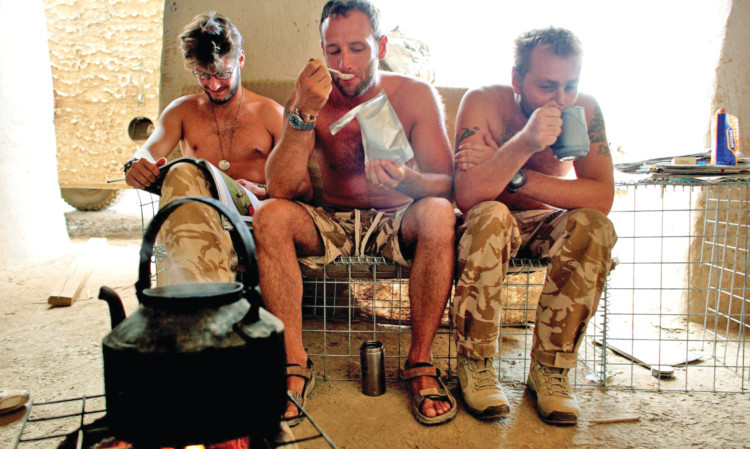
Fears over health of nut allergy soldiers.
Army chiefs have admitted dozens of frontline soldiers are putting their lives at risk by eating rations.
The Ministry of Defence has revealed that 111 serving troops are known to have a nut allergy despite army policy barring people with severe allergies from joining up.
The list of sensitive soldiers includes 59 deemed to be “medically fully deployable”, meaning they can serve anywhere they are needed, such as on frontline operations.
Of the remaining troops, 25 are said to be “medically limited” in their ability to be deployed while 27 cannot be due to a medical condition, although this may not be related to their allergy.
The army website lists “severe nut allergy” among a number of conditions which can stop people from signing up. It also says that “severe allergic reactions or anaphylaxis requiring adrenaline injection” can prevent an entrant’s eligibility.
Lynne Regent, CEO of The Anaphylaxis Campaign, which raises awareness of the issue, said: “Any allergic reaction, even in its mildest form, could result in the sufferer’s effectiveness being reduced. If this were to occur whilst on operations, it could have a damaging effect on their unit.”
Lynne also said nut allergies can be unpredictable and factors such as poorly controlled asthma, infection, exercise and alcohol can contribute towards the severity of a reaction. This means even people who consider their allergy to be mild could still suffer an extreme reaction unexpectedly. Severe allergic reactions are known as anaphylactic shock and can cause breathing difficulties as well as swelling of certain body parts, particularly the face. In extreme cases these episodes can kill.
Maureen Jenkins, clinical director for Allergy UK, said the army is risking the health of its soldiers with allergies by not ensuring its food is nut-free.
She added: “However, these soldiers should know their risk. The severity of a reaction is unpredictable and cannot be estimated by previous reactions.” The army cannot guarantee its food is nut-free and so will not accept people with severe allergies as it could be sued if they suffered a reaction if their rations were contaminated.
Bolton teenager Adam John launched a petition last year calling for the army to allow people with nut allergies to sign up. Adam, who himself has a nut allergy, accused military chiefs of “dietary discrimination”. He also argued it was unfair for the army to refuse to provide nut-free food when it provides Halal and Kosher food for Muslim and Jewish soldiers.
An MoD spokesperson said: “Anyone joining the Armed Forces needs to be medically fit to meet the requirements of their branch or trade. However, on occasion individuals may develop certain allergies whilst in service.
“In these instances we always take the safety of our personnel into account and manage their care on a case by case basis.”

Enjoy the convenience of having The Sunday Post delivered as a digital ePaper straight to your smartphone, tablet or computer.
Subscribe for only £5.49 a month and enjoy all the benefits of the printed paper as a digital replica.
Subscribe